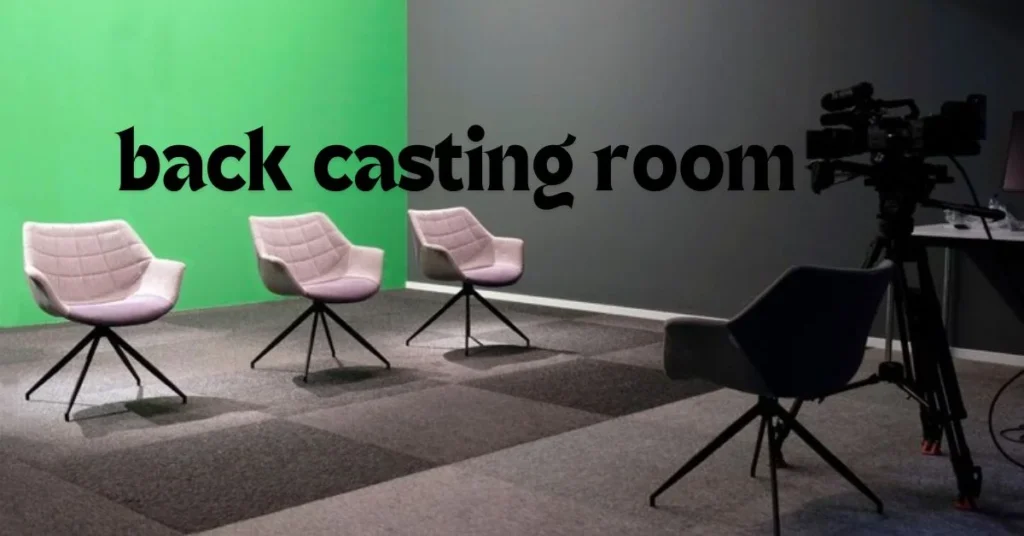Introduction to Back Casting
Welcome to the intriguing world of back casting, where the future isn’t just a destination—it’s a carefully crafted path. Imagine stepping into a room filled with ideas and possibilities, where you start at your desired outcome and work backwards to map out every step needed to get there. This innovative approach not only fuels creativity but also sharpens your strategic thinking in business planning. Whether you’re an entrepreneur looking for direction or part of a larger corporation refining its vision, understanding the ins and outs of back casting can be transformative of back casting room. Join us as we delve into this powerful technique that could redefine how you envision success in your professional journey.
The Importance of Back Casting in Business Planning
Back casting is a strategic approach that turns conventional planning on its head. By envisioning the desired future first, businesses can align their resources and actions more effectively. This method fosters clarity around long-term goals.
In an ever-changing market landscape, back casting encourages adaptability. It allows companies to anticipate challenges and prepare proactive solutions rather than reacting after issues arise.
Moreover, this technique promotes cross-department collaboration. When everyone shares a common vision of the end goal, teams are likely to work together more cohesively.
Using back casting can also drive innovation. Focusing on where you want to be inspires creative thinking about how to get there. It pushes organizations beyond traditional mindsets and opens up new possibilities for growth and success in business planning.
The Process of Back Casting
Back casting starts with a clear vision. This vision serves as the end goal, guiding all subsequent steps.
Next, gather relevant data and insights about current trends. Understanding where you stand is crucial for effective planning.
Then, work backward from your desired outcome. Identify key milestones that lead to your ultimate goal. Each milestone acts as a stepping stone in reverse order.
Involve stakeholders throughout the process. Their perspectives can enrich understanding and contribute valuable input.
Document every step meticulously. A well-structured plan helps track progress and allows for adjustments along the way.
This methodical approach transforms abstract ideas into actionable plans, making it easier to navigate toward success without losing sight of the bigger picture.
Common Misconceptions about Back Casting
Many people misunderstand back casting, believing it’s solely about predicting the future. While foresight plays a role, the technique is much more nuanced.
Another misconception is that back casting eliminates uncertainty. In reality, it provides a structured approach to address uncertainties by outlining clear goals and pathways backward from those objectives.
Some assume it’s only useful for long-term planning. However, businesses can apply back casting to short-term projects as well, enhancing adaptability in various scenarios.
There’s a belief that back casting is rigid and doesn’t allow for changes along the way. The truth is that this method encourages flexibility; adjustments can be made as new information emerges or circumstances shift. Understanding these nuances helps organizations harness its full potential effectively.
Real Life Examples and Case Studies
One notable example of back casting in action is the city of Copenhagen. Aiming for carbon neutrality by 2025, planners worked backward from this ambitious goal. They outlined specific milestones and actions needed each year to achieve their vision.
Another compelling case comes from Coca-Cola. The company faced water sustainability challenges globally. By envisioning a future where they would replenish all water used in production, they mapped out the necessary steps to reach that target. This included strategic partnerships and innovative conservation measures.
In education, schools have embraced back casting to enhance student outcomes. For instance, a district may set a long-term goal of improving graduation rates and then work backwards to identify curriculum changes and support systems needed along the way.
These examples illustrate how different sectors leverage back casting as a powerful tool for strategic planning and effective decision-making.
Tips for Successful Back Casting
To master back casting, start with a clear vision. Define your end goal precisely. This clarity will guide every step you take.
Next, gather relevant data and insights. Understanding trends and potential obstacles is crucial for effective planning. Use this information to create realistic scenarios that align with your objectives.
Engage diverse perspectives during the process. Encourage collaboration among team members to generate innovative ideas and solutions. Different viewpoints can unveil hidden challenges or opportunities.
Incorporate flexibility into your strategy. The landscape of business is ever-changing; adaptability is key to overcoming unexpected hurdles.
Regularly review progress against established milestones. This practice keeps everyone accountable and allows for adjustments as needed, ensuring you stay on track towards achieving your goals in the back casting room.
Conclusion
Back casting is more than just a strategic planning tool; it’s a transformative approach that can redefine how businesses set and achieve their goals. By envisioning the future first, organizations can create actionable steps to bridge the gap between where they are now and where they want to be.
The importance of back casting cannot be understated. It fosters creativity and innovation while ensuring that teams remain focused on long-term objectives. Understanding its process helps in breaking down complex tasks into manageable actions, making it easier for employees at all levels to contribute meaningfully.
Despite some common misconceptions surrounding back casting—like it being overly rigid or time-consuming—many successful enterprises have proven otherwise. Real-life examples demonstrate its adaptability across various industries, showcasing how visionary companies effectively navigate challenges by working backward from their desired outcomes.
For those looking to implement this powerful technique, several tips can enhance your experience in the back casting room. Emphasizing collaboration within your team can lead to richer insights and stronger buy-in for initiatives developed through this method.
As businesses continue navigating an ever-changing landscape, embracing innovative strategies like back casting will likely become increasingly essential for sustained success. This methodology empowers organizations not only to see beyond immediate obstacles but also craft pathways toward meaningful futures that align with their core values and aspirations.
FAQs
1. What is a “Back Casting Room”?
A “Back Casting Room” is a specialized space designed for the purpose of simulating past events, actions, or decisions in order to predict outcomes and assess strategies. It’s commonly used in industries like film production, marketing, and forecasting, where understanding past trends can provide insights for future planning.
2. How does a Back Casting Room help with decision-making?
A Back Casting Room allows decision-makers to analyze historical data and past scenarios in a controlled environment. By recreating specific conditions or actions, it helps them identify patterns, gain insights, and make more informed, forward-thinking decisions for future projects.
3. Who typically uses a Back Casting Room?
Professionals from a variety of fields such as film directors, marketers, business strategists, and analysts use Back Casting Rooms. They use the space to review past scenarios, strategize, and plan effectively for upcoming events or projects by learning from history.
4. What tools are used in a Back Casting Room?
Common tools found in a Back Casting Room include interactive displays, simulation software, archival materials, and decision-analysis systems. These tools enable users to recreate past situations, track trends, and visualize outcomes to improve future strategies.
5. How can the concept of back casting be applied outside of a room setting?
Back casting can be applied outside a physical room setting by utilizing digital tools and software that model past events. Organizations can use back casting strategies in business meetings, online workshops, and data analytics platforms to help with long-term planning and strategic foresight.







